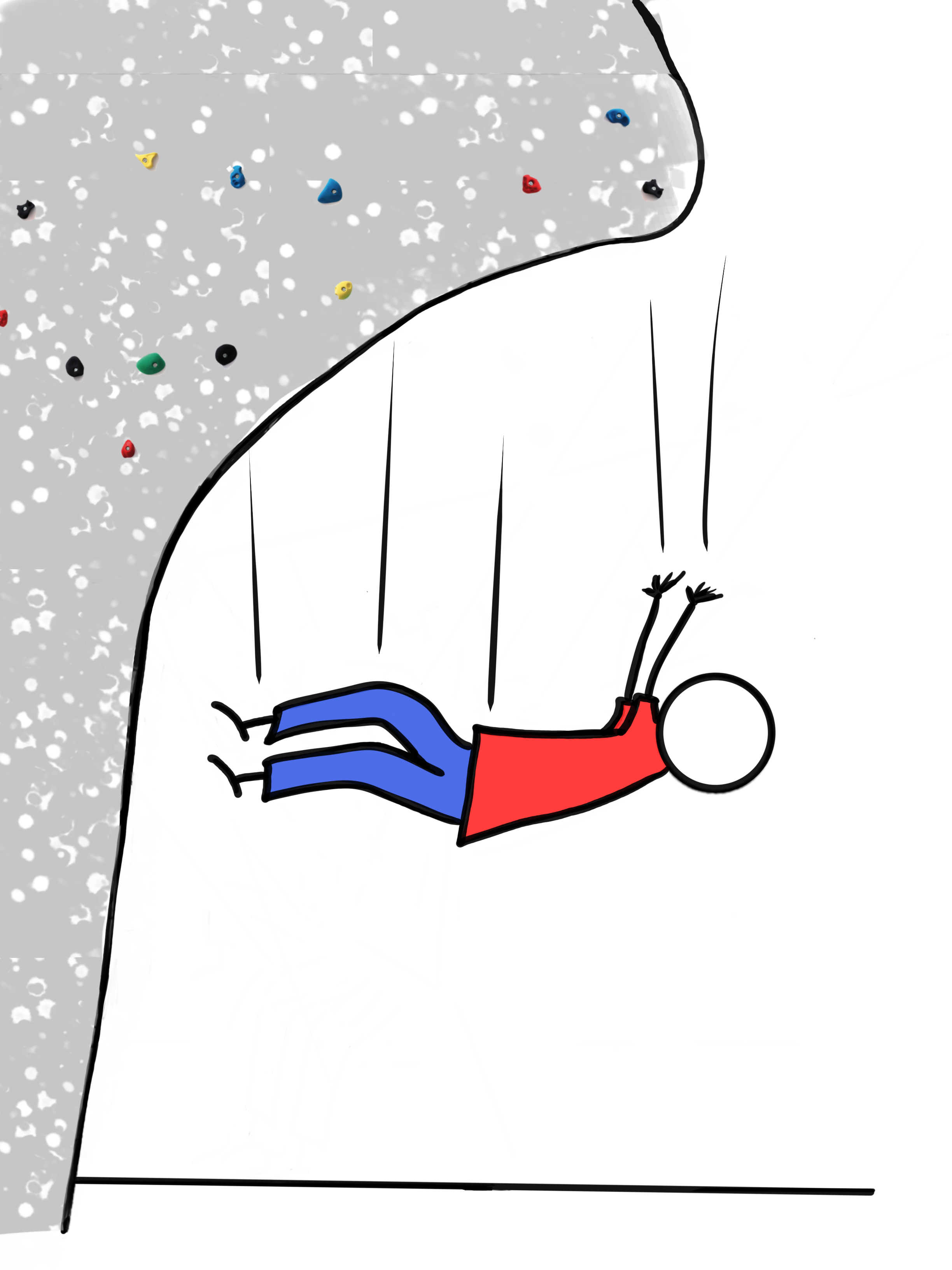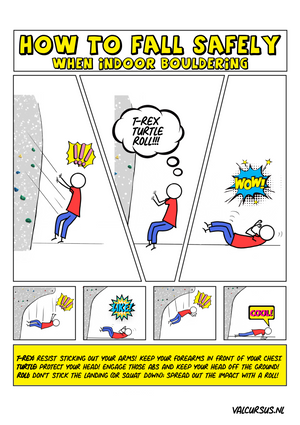
Information for gyms
Bouldering is a relatively young sport, but it's growing rapidly. As more and more people are joining bouldering gyms, so too are the amount of injuries from bouldering. Even though it's a relatively safe sport, there's a lot of things bouldering gyms could be doing to further increase the safety of the sport and reduce the amount of injuries.
Common injuries with indoor bouldering
Let's look at some common injuries with indoor bouldering:
- Acute injuries:
- Joints injuries from the fall (from a strained ankle to broken wrists)
- Injuries due to falling onto objects or others
- Wear & tear injuries:
- Overuse injuries from climbing too hard or too much
- Long term health issues due to cumulative damage from falls
Most of us can picture what the acute injuries would look like. Someone might fall, hit the mat and roll their ankle. These kinds of injuries from bouldering are rising so quickly (due to the popularity of the sport) that it has caught the attention of the Ministry of Health and sports in Holland. Although bouldering is a relatively safe sport, we risk having unwanted rules and regulations if we don't take action ourselves to further increase safety.
Wear & tear injuries are much more complex. The impact of falling while bouldering is MUCH higher than most people think, and repeated falls will cause wear & tear injuries in the long run. Because bouldering is such a young sport, there's not a lot of data. But I've spoken to orthopedic surgeons who mentioned they were seeing an alarming amount of boulderers who needed a joint replaced as they completely wore it out. The easiest ways to reduce these kinds of injuries is by downclimbing and by rolling to spread the impact of the fall. Even professionals have had career ending injuries that would have been prevented this way. It's time to start looking at how we can make these good habits the norm in every bouldering gym.
Steps a bouldering gym can take to increase safety
Although there's not much data, as the popularity of the sport grows, so too does our understanding of how to prevent injuries. Below are some best practices collected from over a dozen of different bouldering gyms in Holland:
- Teach first time visitors to downclimb and proper falling techniques
- Make sure the fall zone is clear so that climbers can't fall on top of objects
- Make sure nobody sits in the fall zone, and that children don't run and play on the bouldering mats
- Have the personnel of the bouldering gym give the right example
- Give the right example in all communication (such as instagram videos)
- Make safe falling techniques an essential part of every bouldering (beginners) course
- Communicate how to fall correctly through posters, social media and/or videos at the entrance of the gym.
- Keep the foot holds clean (lots of injuries happen from 30cm off the ground, because the climber doesn't have time to react and can easily roll their ankle)
- Promote a culture of brushing holds
- Add a carpet on top of the mat, to help keep the foot holds clean (in one gym in Holland this halved the amount of injuries)
- Mention proper falling techniques if someone is displaying potentially dangerous habits
- Consider safety when building routes
- On vertical and slabby routes, climbers could hit something on their way down, try to prevent holds or volumes from sticking out
- A lot of injuries happen low to the ground (<0.5m) as the foot could slip and hit the mat before the climber has time to react. Consider making the foot holds low to the ground a bit more positive.
- A lot of climbers get scared and therefore tense high on the wall, and falling while tense increases the chances of getting hurt. So consider putting the crux mid climb or add down climb jugs
- Sideways dynos can hurt the shoulder and lead to uncontrolled falls, consider slowly introducing climbers to such moves so they learn
- Learn from accidents
- Keep track of data, so you can see when most accidents happen, and you can think of ways to prevent future accidents
- Call the injured climber at a later time to get more information (and to be nice)
- Work on a culture where all members of the bouldering gym feel responsible for safety, and will correct others to keep the fall zone clear and have boulderers apply proper falling techniques
Also be sure to read the guidelines stated in EN12572-2:2017 on bouldering wall height, mat size and type. For instance; a bouldering wall shouldn't be higher than 4.5 meters (4 meters if there's a topout).
As a reminder, these are dangerous habits when falling
- Trying to stick the landing
- Especially while falling sideways or while turning
- Sticking out your arms
- Falling on your head or neck
- Falling straight on your bum (full impact of the fall goes straight into your spine)
- Falling while tense
- On a slab: falling on a hold or a volume
- Falling while the fall zone is not clear
- Trying to catch a hold while falling (very dangerous for the shoulder)
- Climbing with a chalk bag and brush while climbing (or any other hard objects)
Final thoughts
It takes about 2 months for the habit of correct falling techniques to form. So promote your members to keep practising them every single time they come down from the wall so it becomes a habit. Once it becomes a habit for your current gym members, new visitors will learn by seeing and copying others.
More information
Basics of falling while indoor bouldering: T-rex, Turtle, Roll
Advanced falling techniques, from a high heel hook or crazy dyno
Impact from falling while bouldering
Free poster you can put up in your gym: Download poster as PDF.
Big thanks to Emily Coomber for the artwork!
